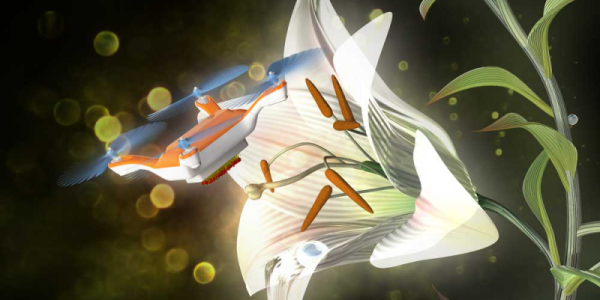Yes, the pun was ripped off the article that got our attention . It was just too good not to share. A team of researchers in Japan created an artificial honeybee, a small drone that is meant to cross-pollinate flowers. The (still) manually controlled drone is 4 centimetres wide and weighs only 15 grams. At the bottom side of the drone, a mix of a special sticky gel and horse hair resides. The purpose of this gel is to collect the pollen particles as it bumps into the flowers and exchange it as it goes hopping around from plant to plant. In experiments, the drone was able to cross-pollinate Japanese lilies (Lilium japonicum) without damaging the plant, stamens or pistils when the drone flew into the flowers.
The gel used for the artificial pollinators was the result of a failed experiment back in 2007. While researching electrical conduction liquids, Eijiro Miyako, a chemist at the National Institute of Advanced Industrial Science and Technology (AIST) Nanomaterial Research Institute, produced a sticky gel with no useful electrical characteristics and stored it away in a cabinet. After 8 years, when cleaning the cabinet, he found the gel still sitting there, unspoiled.
“This project is the result of serendipity. We were surprised that after 8 years, the ionic gel didn’t degrade and was still so viscous. Conventional gels are mainly made of water and can’t be used for a long time, so we decided to use this material for research.”











